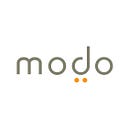Welcome to a post-Apple world where design is everything and everyone wants to talk about it and since everyone has an opinion, it is hard to keep a team moving in the same direction. To build a shared vision of what design brings to the table, it helps to start by listening.
Discovery conversations reveal opportunities and define issues. What does your team think about design? Why does design make a difference? You might ask your team how design adds value and use their words to build a loose frame around the project they know.
Tip #1 — Build a business case and tell a story.
Design is more than a soft value. It is more than pleasing graphics and smooth surfaces. Design is the way people connect a brand promise to a delivered result. Good design is expressed in every touchpoint your customer experiences. The memorable simplicity of unboxing an iPhone is not an accident. Done right, design delivers a message that connects with people and increases your bottom line along the way. Thomas Watson, former CEO of IBM put it simply:
“Good design is good business.”

THINK
Paul Rand’s popular Eye-Bee-M poster, a type of word puzzle known as a rebus that uses pictures to represent letters, was created in 1981 to support IBM’s motto, THINK.
When you are communicating with teams, it helps to tie design to results and results to design. Keep a stream of communication flowing across your team to build excitement and share stories of small, successes to build credibility. How does packaging amplify the excitement of an unboxing experience? How do crafted details, like the soft chime of a Mini Cooper door or the magnetic power cable of a Mac, create delight? Information leads to understanding and stories make information memorable. If you want someone to remember how design creates value, tell a story.
Tip #2 — Everyone is a designer.
There is a natural tendency to think managers, designers and engineers are different people. It is easy to forget we are all designers. If there is a culture gulf among us, it is smaller than you think.
Instead of separating designers into their own group, pull everyone together. Talk about problem solving and clever solutions everyone understands. Remind your team that anyone who has played with Legos has led a design exploration.
None of us has a monopoly on creativity. Everyone designs and everyone has a contribution to make. Provide real examples if you can. Phil Knight, the founder of Nike, was an accountant and a salesman before he made the design decision to make Nike Air visible. Your background does not limit your creativity. We all have a contribution to make and a perspective that has value.
Ten years ago, Welch Allyn introduced a patient monitoring stand with a large bin for supplies. In early testing, a nurse said; “that bin is like a big purse. You have to rummage around on the bottom to find what you want.” In that moment, she became a designer, the bin got smaller, the design got better and the monitor stand became a best seller.
Everyone designs.

Tip #3 — You’re not selling out, you’re buying in.
Designers shouldn’t drag their feet on the way to the board room.
Whether you are launching a project or framing a challenge, it helps to start with a personal connection. For high leverage conversations, designers and managers should forget email and make a call or meet for coffee. Encourage designers to take the time to build one-on-one connections before they present a bold, new idea to a group.
Building context is a first step to building acceptance. When you encourage a designer to understand an audience ahead of time, you are giving that audience a chance to experience design firsthand. By showing humility, demonstrating empathy and listening in one-on-one conversations, designers show managers how they gather the insights that lead to breakthrough designs.
One-on-one meetings build rapport and confidence. Most of us walk on uncertain ground when we make presentations. By building a personal connection before a presentation is made, designers will not be talking to strangers, they will be keeping a promise to people they know. It is hard to sell out when your audience has already bought in.
Tip #4 — Connect with Intention.
Business is based on stories and relationships. Use both.
Share compelling stories of design successes at other companies. Since most managers are drawn to numbers and results, it helps to work real data into your stories. When you use data, tie it to business objectives. Although positive emotions, pleasing forms and high value materials are important, your colleagues want to relate designs to market share gains and financial results. Develop your own approach to data-driven, design storytelling. It works.
Steelcase introduced a compact healthcare cart that included a soft touch cup for a barcode scanner. During testing, a nurse said she wished she could use the cup to hold her Starbucks coffee. Steelcase resized the cup, created an engaging feature, made her morning coffee secure and doubled their cart sales.
Steelcase could tell their dealers this story by talking about emotion, experience and brand. They could talk about color, touch and convenience. Instead, they demonstrate the product, show the comfortable fit of the bar code scanner and replace it with a Starbucks coffee cup and then, they tell the story. By the time Steelcase gets to the nurse who doubled sales, they are talking to a roomful of designers.

Stories are a strong bridge between design and business objectives. Use them to your advantage.
Tip #5 — Start small and scale.
Start with a small team, a small project and a visible goal. Small teams build connection. Small wins build trust. Visible goals build alignment. Prototype your message, then conquer the world.
Wrap
When you are done, start again.
In time, people will learn design is a path to profit and, more importantly, they will learn everyone is a designer.
